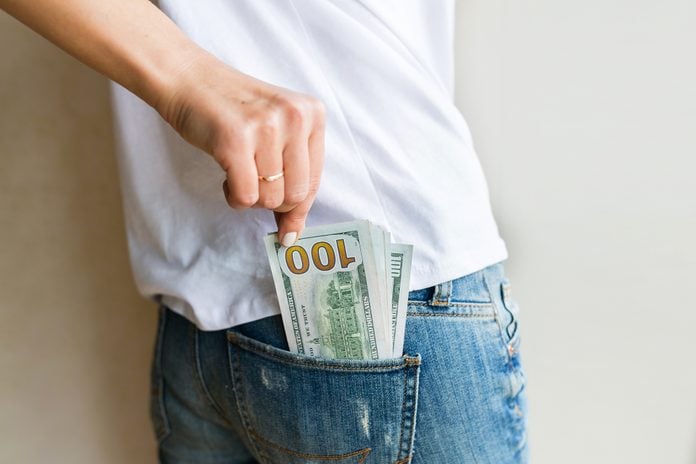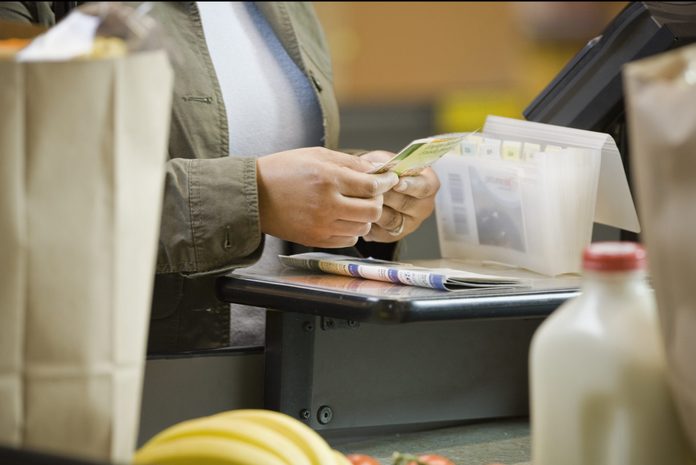
Good savers start now
Good savers start early, say Janet Stanzak and Kristin Garrett, certified financial planners who started their firm Financial Empowerment as a way to help people kick bad money habits and develop better ones. Many good money savers were taught as children to sock away for a rainy day, but even those who weren’t have learned to jump on an opportunity. “As soon as they see they have an option, like a retirement savings plan through work, they take it,” Garrett says. “Good savers don’t procrastinate financial decisions.”

Good savers have a retirement account
It’s not new advice, but there’s a reason every financial adviser repeats it: Because this is your future we’re talking about. A good rule of thumb is to put between 10 and 15 percent of your paycheck each month straight into a retirement account. Here are some more crucial retirement tips to keep in mind when planning your future.

Good savers know the difference between wants and needs
One of the biggest lies we’re sold today, Stanzak says, is that wants are actually needs. “I’ve had so many clients try and tell me that travel, new clothing, and eating out are real needs,” she says. “They’re really not.” Instead, good savers actually write down a list of their basic needs, their wants, and their big wishes.

Good savers don’t rely on autopay
Autopay makes banking easier: In fact, it makes it too easy for money to flow in and out without your really registering what’s happening, Garrett says. Whether it’s writing out a physical check or filling out the form online, intentionally paying your bills makes your brain note the expenditure. If you do set up autopay (no late fees, after all!), make sure you don’t just set it and forget it. Check the transactions at least once a month to make sure the charges are accurate and get a good sense of what you’re spending (by the way—these are the bills you shouldn’t put on autopay). Even better, Garrett adds, good savers write all those transactions down in their budget. Which leads us to…

Good savers have a budget
Yes, a real, honest-to-goodness written chart or spreadsheet that they update and balance regularly is one of the trademark money-saving tips from savvy savers. “The first clue you have that someone has a problem with money is when they can’t provide their monthly cash flow,” Stanzak says. You can’t save if you don’t even know how much money you have to begin with.

Good savers use cash or checks
This isn’t a hard-and-fast rule, Stanzak says, but good savers often tend to use physical types of money. Research shows that people can spend more money with credit cards versus paying with cash. Statistics show that the average cash transaction is $22, whereas the average non-cash transaction is $112. If you’re trying to save, handing someone a wad of cash or writing out a check provides enough of a mental speed bump to slow down many impulse buys. Here are 13 sneaky things your credit card company might know about you.

Good savers prioritize saving
It sounds simple, but one of the best money-saving tips is simply making saving a priority in their lives, says Andrea Woroch, a consumer-finance expert. “Before spending on anything else, they pay themselves first by putting savings into a retirement account or other self-directed savings account,” she says. Make sure you avoid these retirement budget mistakes so you can have a stress-free retirement.

Good savers keep track of the little things
What’s a latte here or a $0.99 app there? Little things can add up to big expenses quickly, Garrett says, often before you even realize what’s happening. Good savers will write down, in their check ledger or budget, all their expenses, even the tiniest ones. Doing this can also help you track down hidden fees you had no idea you were paying.

Good savers look for deals
Being frugal is a big part of saving money. And good savers are not too proud to get coupons, hunt down the best deal, or research all possible options before buying. “Good savers think through each purchase and research alternatives like used options, compare competitor prices, look for coupons, and read reviews in detail to make the best buying decision,” Woroch says. Check out these coupon apps that help you save time and money.

Good savers adjust for life changes
“You’d be amazed at how many people get divorced but keep living their married lifestyle,” Stanzak says. Big life changes, like job layoffs, divorces, and illness, inevitably affect our budgets. Good savers amend their spending to reflect their new earning or income status regardless of how painful it is to acknowledge. If your bills are getting too expensive due to an income change, check out these household bills you can negotiate—you can save money on everyday expenses.

Good savers take free money
Does your employer give you a discount on your insurance for getting a check-up every year? Does your company have employee stock options or offer to match your retirement savings? Do you have flight miles or hotel points accrued that you’re not using? Many people leave this so-called “free money” on the table, Woroch says. It may take a little extra effort to fill out the paperwork, but it’s worth the time.

Good savers have three to six months of expenses saved
Here’s your scary stat for the day: About 56 percent of Americans live paycheck to paycheck, which means millions of us are just one bad car accident or layoff away from financial ruin. It may sound obvious, but good savers save. How much savings you need depends entirely on your lifestyle, but Garrett and Stanzak recommend having enough money to cover at least three to six months of basic expenses like mortgage, insurance, utilities, and food. Speaking of food—these kitchen mistakes could be costing you money.

Good savers are honest with themselves
None of us are getting any younger, that’s for sure. Yet so many people live in denial of this fact, Stanzak says. The truth is that each of us has risk factors that could affect financial security. Good savers are honest about their particular risks—advancing age, tenuous job security, chronic health problems, family issues, etc.—and plan their savings to account for them.

Good savers do not feel entitled
“Too many people have this attitude of entitlement,” Stanzak says. “They get caught up in ‘I work hard, so I should have this because I earned it.'” But if you can’t afford a nice car or a day at the spa, you shouldn’t buy it, no matter how hard you work or how strongly you feel you deserve it.

Good savers use online savings accounts and credit unions
Online savings accounts generally offer a better interest rate than traditional brick-and-mortar banks, Woroch says. “Good savers also shop around to ensure they don’t get charged bank fees and may use a credit union instead.” Learn when you shouldn’t use your credit card for payment.

Good savers make saving easy and automatic
Remember how automatic bill pay allowed you to forget the pain of paying your bills? Well it works the other way too. Automating your savings account, either through an automatic transfer on a certain day each month or through using one of the savings apps like Digit, can take the sting out of saving, Stanzak says.

Good savers live below their means
Just because you have money to spend doesn’t mean you should spend it. Good savers know that living below their means can help them save more for the future. For instance, just because you can afford a new car doesn’t necessarily mean you should get one. If your car is in good shape, use it for as long as you can. Another way to live below your means is to downsize your home. Think about it: do you really need all the space in your home, or could you afford a smaller (and less expensive) place? Downsizing and getting a more affordable home can free up some cash flow each month. Here’s how much the average home costs in each state.

Good savers know when it’s time to pick up a side gig
Good savers are brutally honest about their income. They know how much they can afford to put away each month, and if they need to make more money to reach their savings goals. If need be, they pick up side gigs to help them meet their goals. Who knows, your side gig could turn into a full-time career.

Good savers start small
It can be easy to read lists of money-saving tips like this and feel completely overwhelmed and throw in the towel. But saving doesn’t have to be a huge change, Woroch says. “If you’re new to saving, start small. It’s easier to adapt to a small change than a complete life overhaul,” she explains. “So begin by automating a small amount each week and when you become accustomed to saving that amount and living off what you have left, increase it by a little. You’ll continue creating a better savings habit each time.”
Sources:
- Janet Stanzak, Financial Planner at Financial Empowerment
- Kristin Garrett, Financial Planner at Financial Empowerment
- Andrea Woroch, Consumer-Finance Expert
- Fundera: “Cash vs Credit Card Spending Statistics (2021)“
- Jungle Scout: “Report: 56% of American Consumers Are Living Paycheck to Paycheck“
